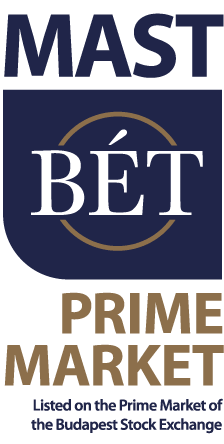The energy efficiency status of residential buildings in Hungary
In the last 10 years, insulation procedures in Hungary have been determined by the tightening construction and energy regulations. New builds are adequately insulated, and the insulations applied during renovations in the last few years are also relatively efficient. As regards the building stock as a whole, however, the number of buildings with proper thermal insulation continues to be low, as nearly 70% of buildings still lack insulation. In Hungary, newly built residential buildings are required to fall under the energy efficiency category BB, which means an annual consumption of 100 kWh/m2. Yet, the country’s national building stock on average is rated category FF, meaning that the consumption is 200-250 kWh/m2 a year. A common type of Hungarian detached houses, the so-called “Kádár Kocka” homes, which were built in the 1960s and 1970s, are energetically categorised as GG, houses built in the 1980s and 1990s are in category FF, whereas 20-year-old buildings fall under category DD. According to our energy calculations, anyone living in a category FF home of 100 m2 can be eligible for reduced utility costs based on their consumption level, but these calculations only assume energy needs required for a home’s basic maintenance, that is, heating, cooling and domestic hot water. These standards, however, are far from real energy requirements, since there is a lot of other consumption inside and outside of the home. Actually, only the owners of BB category buildings have the chance to keep their consumption under the reduced utility costs cap.
Thermal insulation – an investment that makes returns pay back quicker
It depends on given factors, such as the building someone lives in, their energy consumption, and how seriously they take insulation. It is safe to say that insulation is becoming an investment with quicker and sooner returns. This took a 10-year period on average before, but soon it might be even shorter, though the real payback period varies building by building.
From a property market’s point of view, we can even talk about an instant return, as the money invested in the insulation of a building located in a property market of higher liquidity might be immediately included in the selling price. A properly insulated building with a low energy consumption level retains its value and will be easier to sell.
According to recent changes to regulations, any energy consumption that is above a defined level must be paid at market price, which means electricity will cost 6.5 times, whereas gas will cost 9 times more than they will with reduced energy prices. In the case of a 150 m2 building under category FF and with no changes in the consumption, household energy bills can increase by a painful 130-180,000 HUF. As regards electricity bills, the final amount payable that fell between 18-20,000 HUF will rise to 75-88,000 HUF, whereas gas bills will rise from 24-27,000 HUF to 83-99,000 HUF. Thermal insulation plays a key role in energy saving, which is the only way to protect people from the effects of the significant 3-5 times higher household energy bills.
Good insulation might reduce household energy bills
A proper thermal cover with adequately thick insulation, doors and windows reduces the building’s energy needs by up to 50-60%. With the help of modern building engineering solutions, such buildings with low energy needs can be heated/cooled more efficiently, and this way the building’s basic energy requirement (for heating, cooling and domestic hot water) might be lowered by up to 70-80%. Effective insulation significantly reduces energy consumption, which this way might be kept under the average level and therefore the user can pay their household energy bills with a price cap.
The importance of insulating flats with district heating
Formerly, several upgraded panel buildings received thermal insulation, and new doors and windows through financial support called panel programme. These buildings were equipped with insulation of 5-8 cm thickness, which at the time was commonly used, therefore their re-insulation will be due soon, whereas relaunching the support programme will be necessary to upgrade buildings that were previously left out of the programme. Currently, no regulations regarding district heating have been made public yet, but if the consumed energy amount subsidised is set at similar levels, then flats renovated through the panel programme can stay in the discounted price zone with their basic consumption, though, due to some extra consuming devices, these flats might easily be moved to the higher paying category. And the energy consumption of non-insulated buildings with district heating will certainly exceed the average consumption.
In Europe, demand has already increased before
In the last few years, the demand for insulation materials has continuously been expanding and this trend has continued to grow with the soaring energy prices. So far, countries in which this process was stimulated by public incentive schemes have witnessed dramatic market jumps. One instance is Italy, where a tax relief scheme resulted in an insulation fever.
We are forecasting a boosting demand for insulation in the European market as a result of the energy crisis because building thermal insulation has become inevitable. Masterplast is continuously improving its insulation material manufacturing capacity and expanding its choice of product types manufactured. Based on the above-mentioned, we are preparing for increasing demand, which is why two new insulation material manufacturing plants will come into operation in 2023. In Subotica, closed cell XPS polystyrene, whereas, in Italy, EPS-Hungarocell polystyrene will be manufactured by Masterplast. We are also investigating new options for further investment in insulation material manufacturing.

Masterplast Nyrt.
Founded in 1997, the Masterplast group is one of the leading building material producer and distributor companies in the Central Eastern European region. The company group owns subsidiaries in 10 countries, and sells products in a further 30 countries. The company is registered in the premium category on the Budapest Stock Exchange, and had revenue of 145,2 million euros in 2023.

